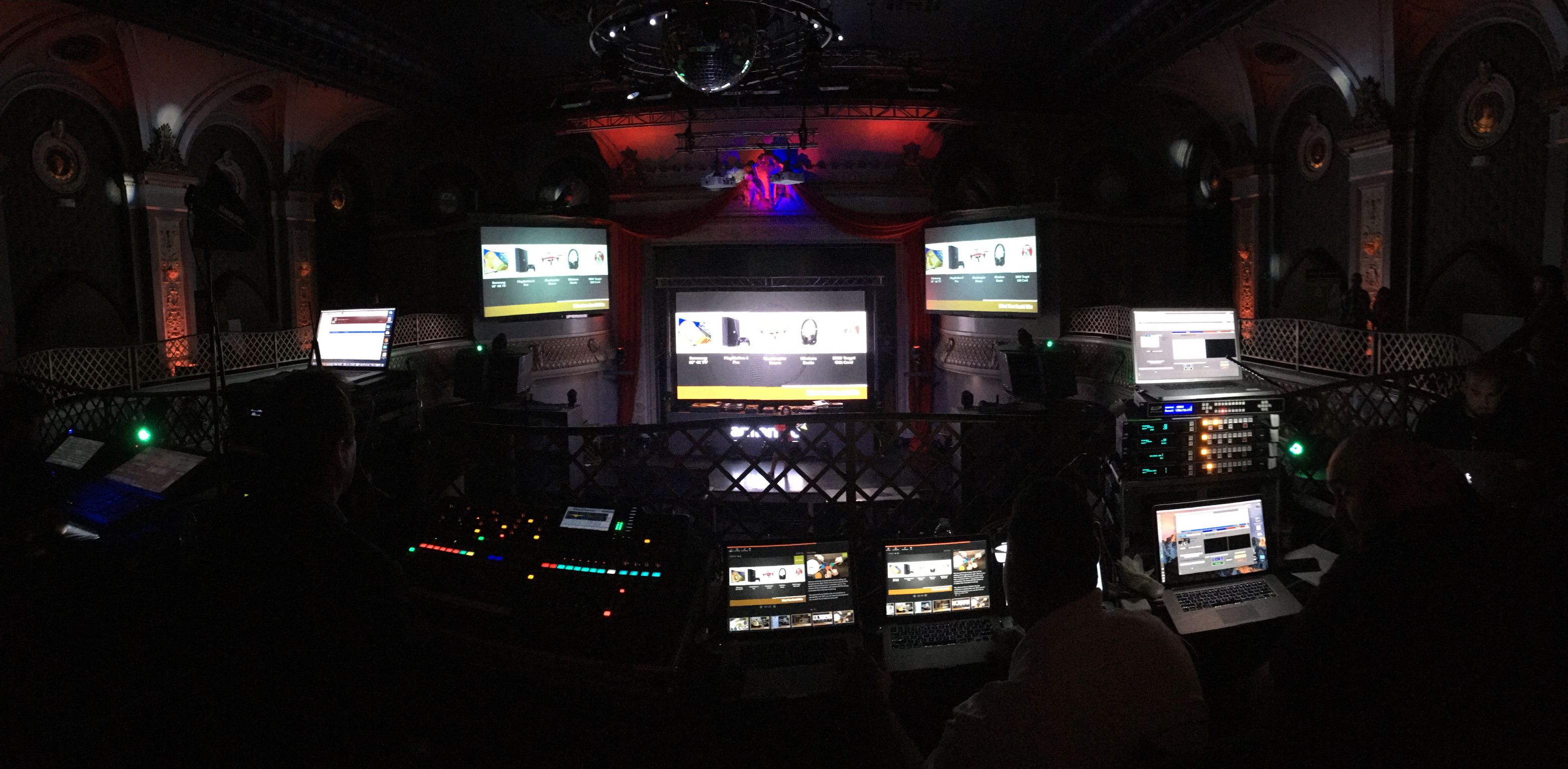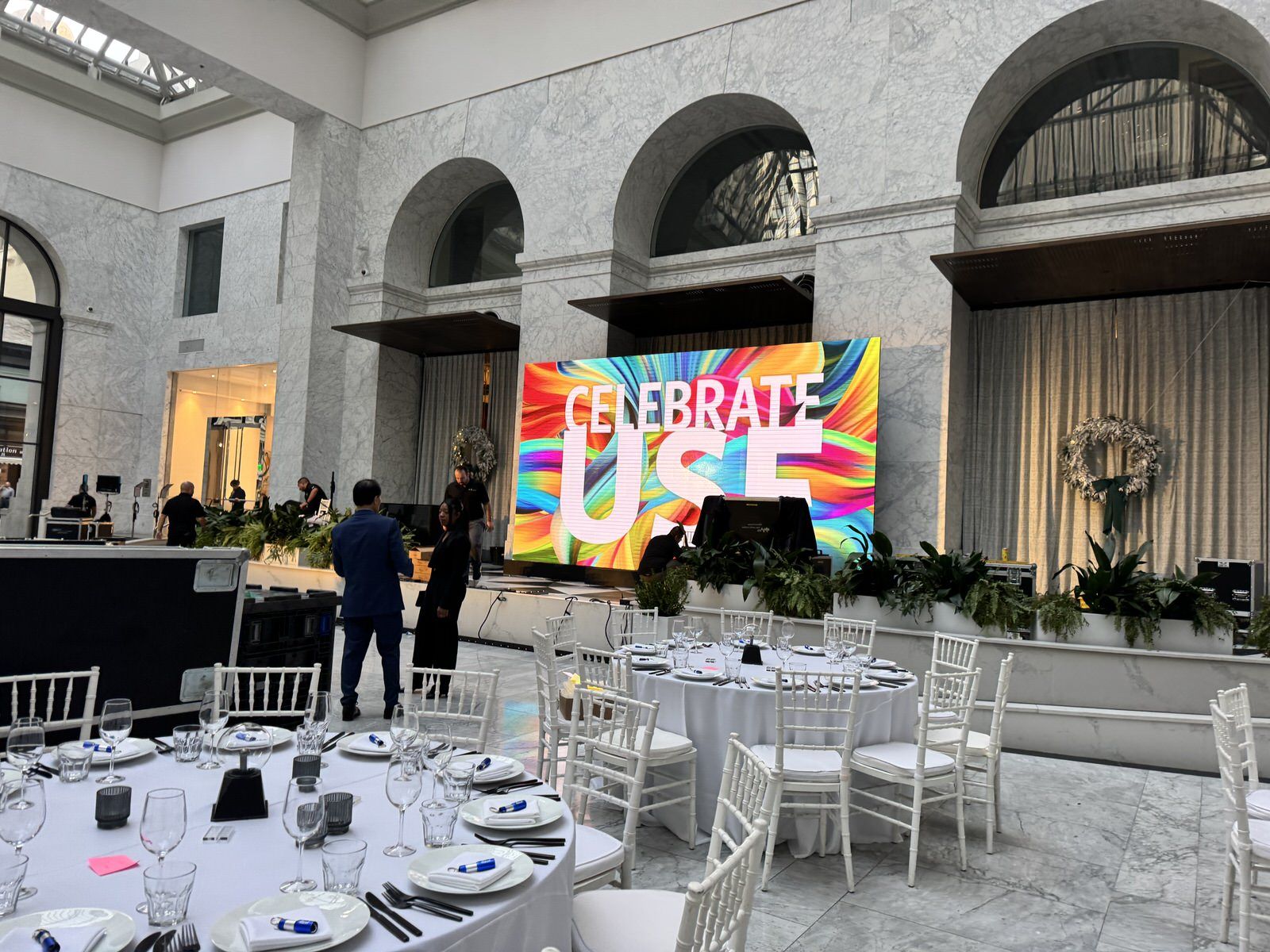Managing Aspect Ratios in Your Content

Aspect ratios are a confusing topic for most people. We start throwing around numbers like “4 by 3” or “16 by 9” and everyone rapidly loses interest. In spite of the confusion, aspect ratios aren’t that complicated, and they’re important to understand. Your onscreen content will look best when the screens, projectors, and presentation content all share the same aspect ratio.
In this article, we’ll simplify the lingo and help you understand how to best manage aspect ratios for your event.
Understanding aspect ratios
Remember playing with Legos as a kid? Imagine the Legos spread out on the table in front of you. Grab some bricks and lay them out with 4 dots across and 3 dots down. That’s a 4:3 aspect ratio. 16 dots across and 9 down? You’ve now got 16:9. Add one more row across the bottom: 16 across and 10 down is 16:10.
There you go – aspect ratios demystified.

The overall size of the screen doesn’t matter when we’re talking about aspect ratios. A 16:9 aspect could appear on anything from your mobile phone to a massive theater sized screen. It’s also important to note that the screen resolution (the number of dots that make up the image) is different than the aspect ratio.
The two most common ratios by far are 16:9 and 4:3. Your TV at home almost certainly 16:9. The old tube TV with the rounded glass on the screen that you grew up watching? 4:3. Your iPad is also 4:3, as are many other tablet devices, since 4:3 is considered better for web browsing.
16:10 is another aspect ratio that was used in some computer displays until around 2011. While not as common as 16:9, we still see 16:10 devices just enough to merit a mention here.
Most PowerPoint or Keynote files will arrive in either 4:3 or 16:9, but aspect ratios aren’t restricted to these standard options. With custom projection surfaces or LED walls, we can create screens of almost any size and shape. Ultra-wide projection that covers the entire front (or front and sides) of your meeting room will produce a really cool custom effect that adds life to your content. Vertical screens can be used for motion graphics, presenter titles, sponsor logos, or just ambient projection.
Mixed aspect ratios at your event
During the planning stages of your event, you need to specify the aspect ratio you’ll be working with. 95 times out of 100 this should be 16:9. Some medical events will use 4:3, while some high-end events will feature custom aspect ratios. In general though, most of the corporate audio/visual world works in 16:9. Our screens, projectors, and processing equipment are all optimized to work at this aspect, but we can still work with 4:3 if that’s your preference. We do need to know this ahead of time so that we can bring the right screens.
Sometimes, in spite of your careful planning, a presenter will show up onsite with a presentation in the wrong format. In this case we’ll need to decide whether it’s feasible to convert their content to the appropriate aspect, or if we need to leave it alone and project it as-is.
The best option is converting the non-compliant presentation to the event’s aspect ratio. If it’s a simple presentation without a lot of builds or animation, we can usually convert 4:3 content to 16:9 fairly easily. More complex presentations, or those with poor quality graphics and design are harder to convert. Unless we have a lot of time available to spend on it, we usually have to project the presentation in its original aspect.
Mixed aspect ratios will always introduce some form of letterboxing or pillarboxing. If your show is 16:9 and a presenter brings in a 4:3 presentation, that content will be shown with vertical black bars on the sides of the screen, known as pillarboxing. 16:9 content on a 4:3 screen doesn’t happen very often anymore, but that would introduce letterboxing, or horizontal space at the top and bottom of the screen.

Working with custom aspect ratios
If you’re doing a high-end event, you may be working with custom aspect ratios. With advanced image processing tools like our Spyder, we can blend multiple projectors together to create impressive panoramic presentations. We can also drive multiple screens, allowing integrated presentations where backgrounds, graphics, and colors all move and flow together, immersing your audience in the content.
For events like this, our production team will work with you to create completely custom content, designed specifically for the layout of the screens. If your presenters are bringing their own presentations, we can integrate them into the layout in a variety of ways without having to modify their files.
Once you know what the numbers refer to, aspect ratios really aren’t that complicated. As with just about everything else in this business, planning ahead and communicating clearly can make this a very simple element of your planning.
Recent Posts

The Hidden Costs of Cheap Conference AV (And How to Avoid Them)

VIP Goes All In on Sales Kickoffs

Beyond Basic Signage: How Smart LED Displays Transform the Conference Experience
